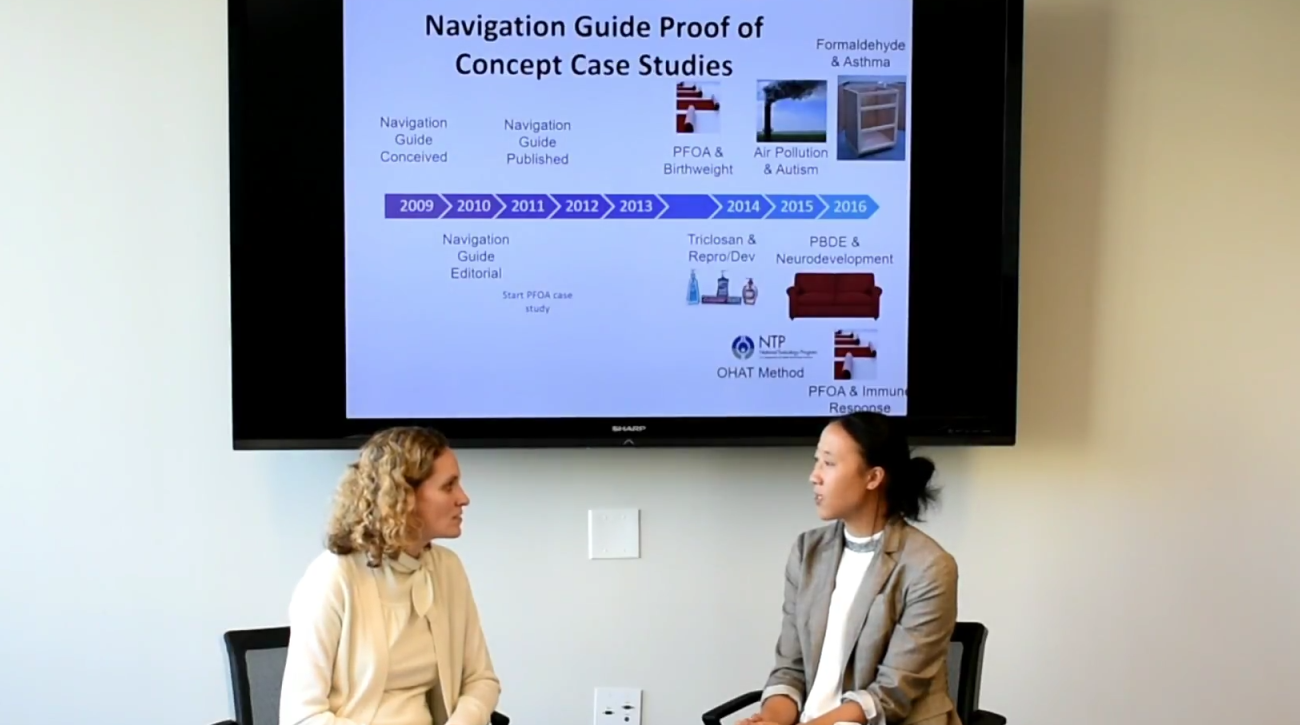Because many students in the Department of Environmental and Occupational Health (EOH) at GW’s Milken Institute School of Public Health undertake systematic reviews as their culminating experiences, a recent department seminar featuring Research Scientist Juleen Lam of the University of California at San Francisco was particularly well-attended. Lam discussed the increasing role that systematic reviews are playing in environmental health policy-making.
In her talk, “Navigating the science: opportunities to improve health through science-based policies,” Lam explained that the methodologies used for systematically evaluating and reviewing environmental health data have advanced significantly over the past decade. Researchers have modified empirically based approaches used for reviewing evidence in the medical sciences, such as Cochrane and GRADE, so that they can be applied to the data on health effects derived from experimental animal toxicology and observational human epidemiology studies that are used in environmental health research.
Lam is part of the research team at the University of California at San Francisco Program on Reproductive Health and the Environment that created the Navigation Guide systematic review methodology to synthesize scientific evidence for environmental health decision making. She presented results from proof of concept case studies produced using the Navigation Guide and spoke about the role of systematic review methodology in environmental health policy-making. She provided examples of how systematic reviews are being used to produce data about chemical toxicity in support of the recent Lautenberg Amendments to the 1976 Toxic Substance Control Act. Lam also identified future directions for development and research.
After the seminar, Hannah Donart, a second-year MPH student in the department’s Environmental Health Science and Policy program, asked a question that inspired Lam to talk about systematic reviews that associate exposure to polybrominated diphenyl ether (PBDE) flame retardants with effects on children’s IQs and rates of attention deficit hyperactivity disorder (ADHD). Those reviews influenced policy in San Francisco and the entire state of California.
In addition to all she has learned about environmental and occupational health as a GW MPH student, Donart has worked at the Carnegie Endowment for International Peace’s Energy and Climate Program and completed internships with Congressman Joe Courtney and the Health Program at the Environmental Defense Fund. She received her undergraduate degree in International Development at the University of California at Berkeley, and she recently completed her practicum with the Environmental Health Program at NACCHO. Donart is interested in pursuing a career focused on the intersection between climate change mitigation and environmental health policy.
In her response to Donart, Lam said: “As one city starts to take action, in terms of policies, it can start to inform other interventions that other community-based organizations start to take on in their geographic locations.” You can listen to Donart’s questions and Lam’s answers in this 3:24 recording on the EOH Department’s Youtube Channel.
The department brings in one or two experts each month to discuss their research, and these seminars are one of the ways our students learn about current EOH topics.


